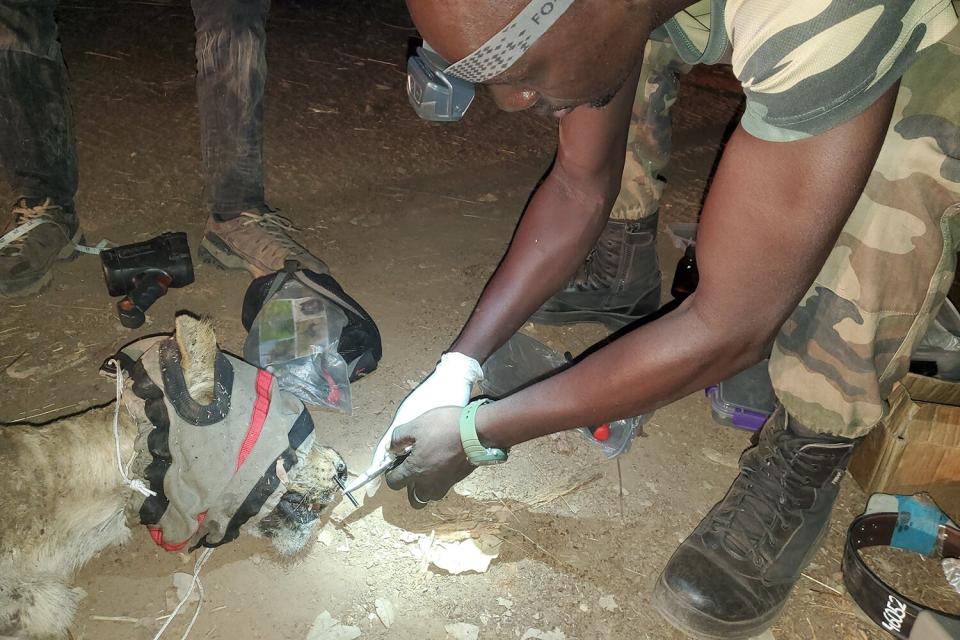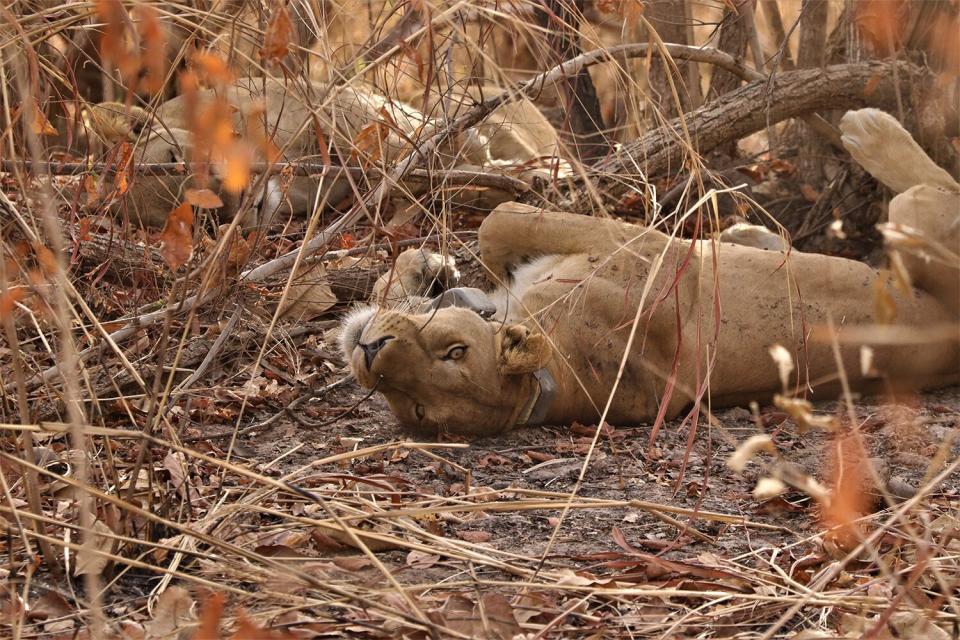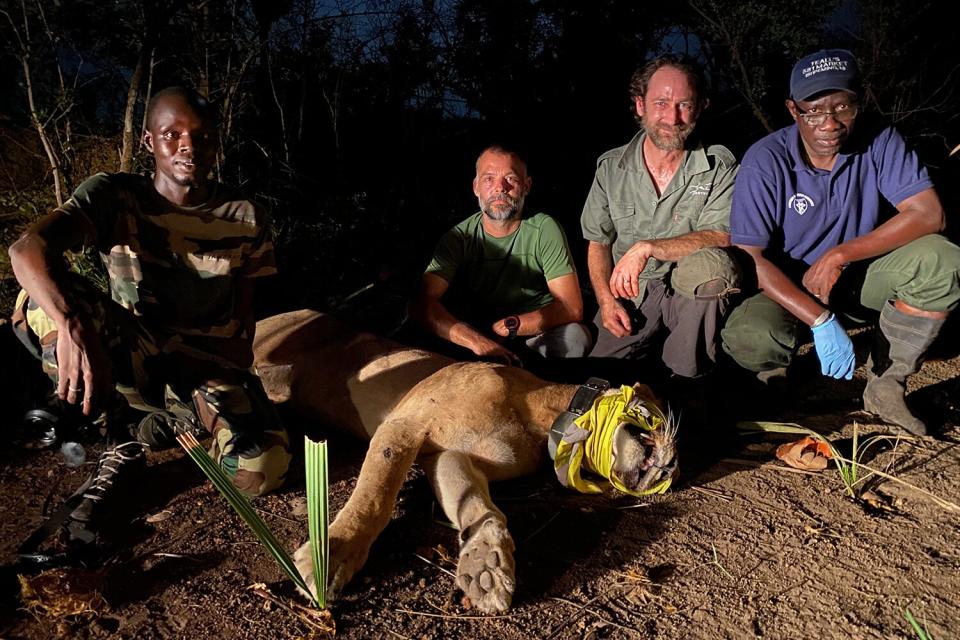Group Saving Endangered Lions Helps Lioness Remove Porcupine Quills: 'Probably Saved Her Life'

Panthera
Global wild cat conservation organization Panthera and their partner, Senegal's Department of National Parks, are making a difference one lion at a time.
According to a May release from Panthera, the nonprofit and the Senegal parks department are working to place GPS collars on critically endangered West African lions in Niokolo Koba National Park (NKNP), and successfully collared six lions in 2021 and 2022.
The data being collected from the six collared animals will help "provide critical data for the protection of the species," according to the release.
RELATED: Experts Searching for Endangered North Atlantic Right Whale Spotted Entangled Near Quebec
While recently working on this project, conservationists found a young, skinny lioness who had become separated from her pride and was unable to hunt on her own, the release explained.

Panthera A lioness Flo pictured with her sister in the background who was collared last year.
When the research team took a closer look, they discovered the animal had a "face full of porcupine quills" that they suspect had prevented her from eating for "likely a month."
The team decided to tranquilize the wild animal, remove the quills from her mouth and face, disinfect the wounds, and administer antibiotics.
"We probably saved her life. She was too small to fit with a GPS collar, but we took genetics samples from her, and hopefully, someday, we will find her again or, even better yet, will find her offspring," Dr. Philipp Henschel, Panthera's West and Central Africa regional director, said in a statement.

Paul Funston/Panthera Panthera scientists and members of Senegal's Department of National Parks with an anesthetized and collared lion in Niokolo Koba National Park, Senegal last year.
Along with news of the impromptu rescue, Panthera's release also shared that the West African lion population in NKNP has more than doubled in the last decade.
RELATED: Cheetah Cub from Oregon Moves to the Cincinnati Zoo and Becomes an Ambassador for Her Species
When the organization first visited the park in 2011 to assess the status of its West African lion population, the group found just 10-15 lions in the park, according to Henschel. Panthera estimates that about 40 lions live in the park now, after a decade of conservation efforts in partnership with local park authorities.
Across all of West Africa, the organization believes there are 250 West African lions left in the wild.

 Yahoo Movies
Yahoo Movies 